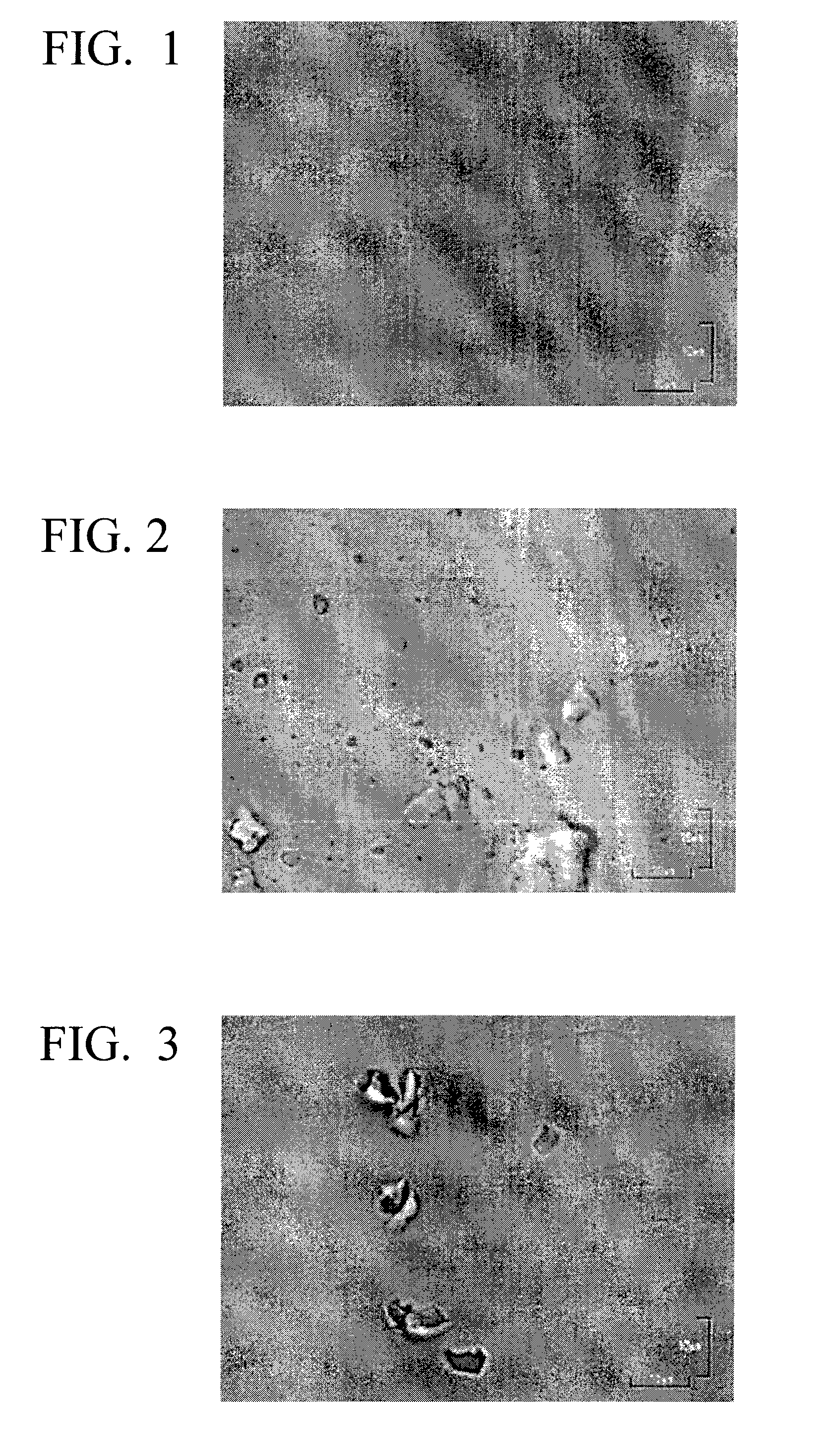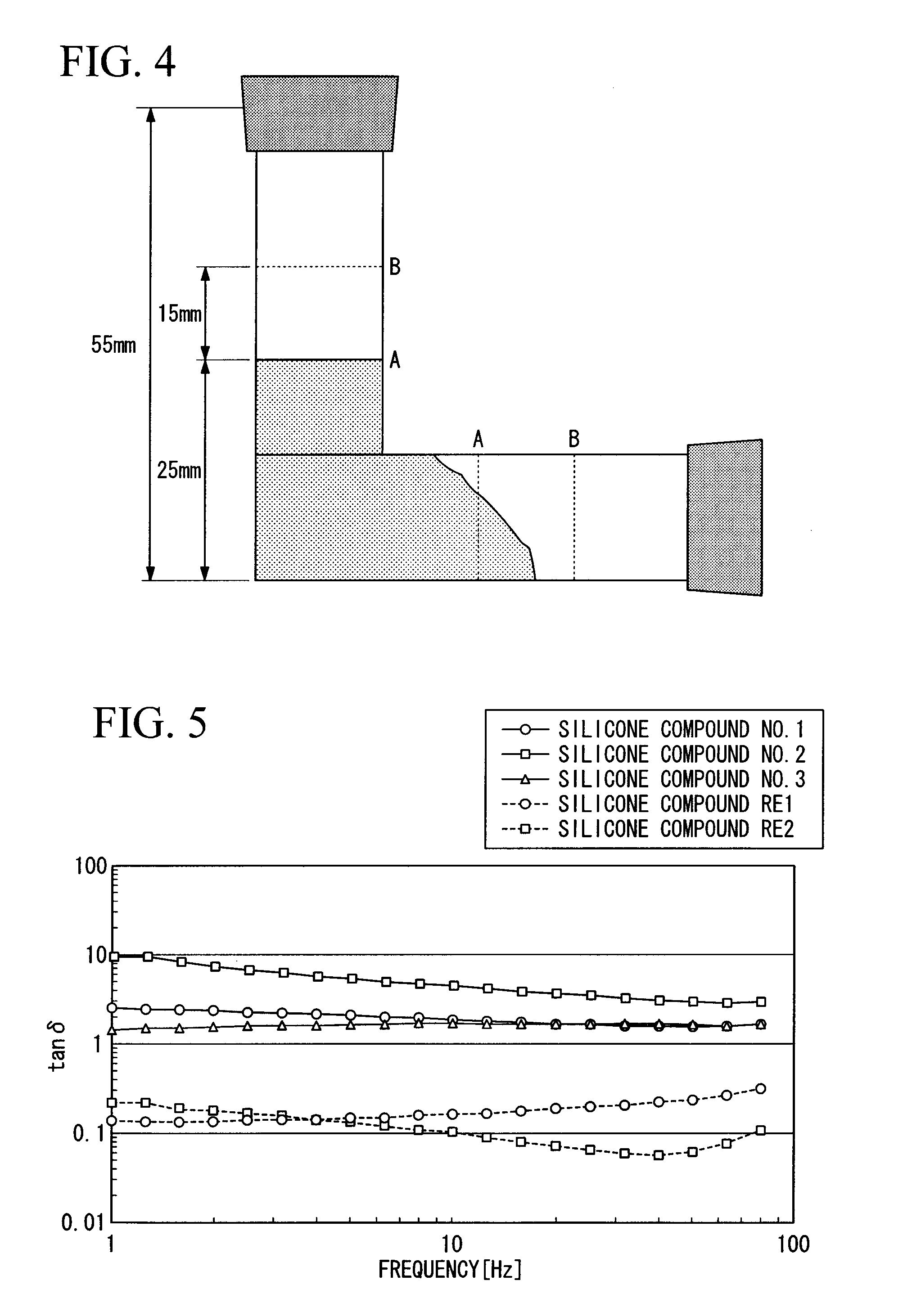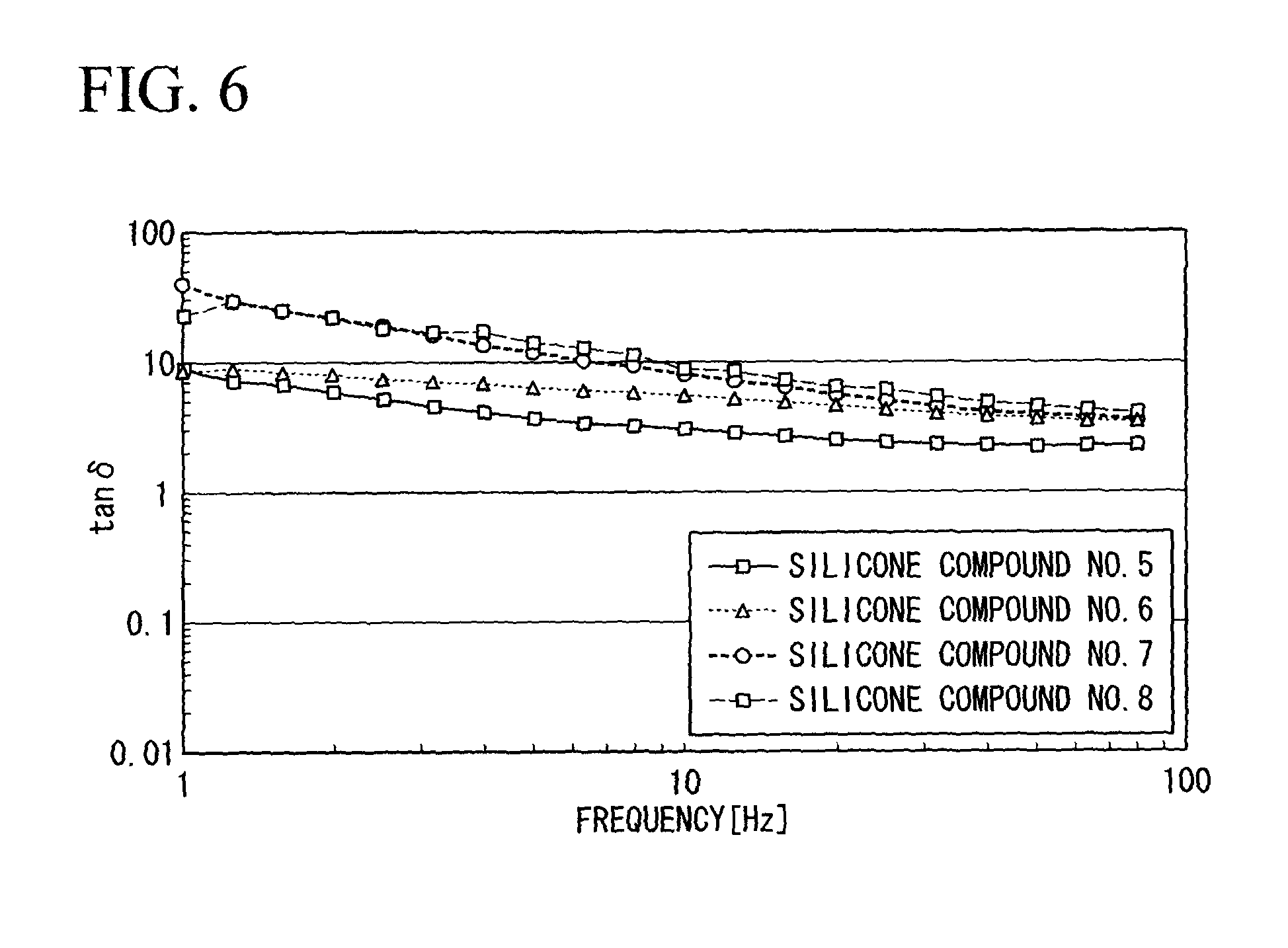Cosmetic containing liquid organopolysiloxane
a technology of liquid organopolysiloxane and cosmetics, which is applied in the field of cosmetics containing liquid organopolysiloxane, can solve the problems of oil-based dispersion, poor smoothness, and difficulty in preparing the preparation process, and achieves high degree of polymerization, low viscosity, and distinct elastomeric effects
- Summary
- Abstract
- Description
- Claims
- Application Information
AI Technical Summary
Benefits of technology
Problems solved by technology
Method used
Image
Examples
synthesis example 1
Synthesis of Silicone Compound No. 1
[0191]0.26 parts by weight (mass) of a methylhydrogenpolysiloxane represented by the following average composition formula: M-D3-DH5-M, 7.50 parts by weight (mass) of a methylhydrogenpolysiloxane represented by the following average composition formula: MH-D17-MH, 92.24 parts by weight (mass) of a methylvinylpolysiloxane represented by the following average composition formula: MVi-D150-MVi, and 300 parts by weight (mass) of a decamethylpentacyclosiloxane (SH 245, manufactured by Dow Corning Toray Co., Ltd.) were placed in a reactor, and the mixture was stirred under a nitrogen atmosphere until a uniform mixture was obtained. Subsequently, 0.004 parts by weight (mass) of a platinum catalyst was added thereto and stirred until a uniform mixture was obtained. Subsequently, the mixture was allowed to stand for 3 hours at the inner temperature ranging from 100° C. to 120° C. The disappearance of the Si—H bond was confirmed by IR spectrum, and the deve...
synthesis example 2
Synthesis of Silicone Compound No. 2
[0192]0.69 parts by weight (mass) of a methylhydrogenpolysiloxane represented by the following average composition formula: M-D3-DH5-M, 99.12 parts by weight (mass) of a methylvinylpolysiloxane represented by the following average composition formula: MVi-D150-MVi, and 25 parts by weight (mass) of a decamethylpentacyclosiloxane (SH 245, manufactured by Dow Corning Toray Co., Ltd.) were placed in a reactor, and the mixture was stirred under a nitrogen atmosphere until a uniform mixture was obtained. Subsequently, 0.004 parts by weight (mass) of a platinum catalyst was added thereto and stirred until a uniform mixture was obtained. Subsequently, the mixture was allowed to stand for 3 hours at the inner temperature ranging from 100° C. to 120° C. The disappearance of the Si—H bond was confirmed by IR spectrum, and the development of the reaction was confirmed. Subsequently, the reaction mixture was heated under reduced pressure to remove components w...
synthesis example 3
Synthesis of Silicone Compound No. 3
[0193]7.2 parts by weight (mass) of 1-dodecene, 9.8 parts by weight (mass) of a methylhydrogenpolysiloxane represented by the following average composition formula: M-D3-DH5-M, 83.0 parts by weight (mass) of a methylvinylpolysiloxane represented by the following average composition formula: MVi-D40-MVi, and 100 parts by weight (mass) of a decamethylpentacyclosiloxane (SH 245, manufactured by Dow Corning Toray Co., Ltd.) were placed in a reactor, and the mixture was stirred under a nitrogen atmosphere until a uniform mixture was obtained. Subsequently, 0.004 parts by weight (mass) of a platinum catalyst was added thereto and stirred until a uniform mixture was obtained. Subsequently, the mixture was allowed to stand for 3 hours at the inner temperature ranging from 70° C. to 90° C. The disappearance of the Si—H bond was confirmed by IR spectrum, and the development of the reaction was confirmed. Subsequently, the reaction mixture was heated under r...
PUM
| Property | Measurement | Unit |
|---|---|---|
| shear frequency | aaaaa | aaaaa |
| tan δ | aaaaa | aaaaa |
| temperature | aaaaa | aaaaa |
Abstract
Description
Claims
Application Information
 Login to View More
Login to View More - R&D
- Intellectual Property
- Life Sciences
- Materials
- Tech Scout
- Unparalleled Data Quality
- Higher Quality Content
- 60% Fewer Hallucinations
Browse by: Latest US Patents, China's latest patents, Technical Efficacy Thesaurus, Application Domain, Technology Topic, Popular Technical Reports.
© 2025 PatSnap. All rights reserved.Legal|Privacy policy|Modern Slavery Act Transparency Statement|Sitemap|About US| Contact US: help@patsnap.com



